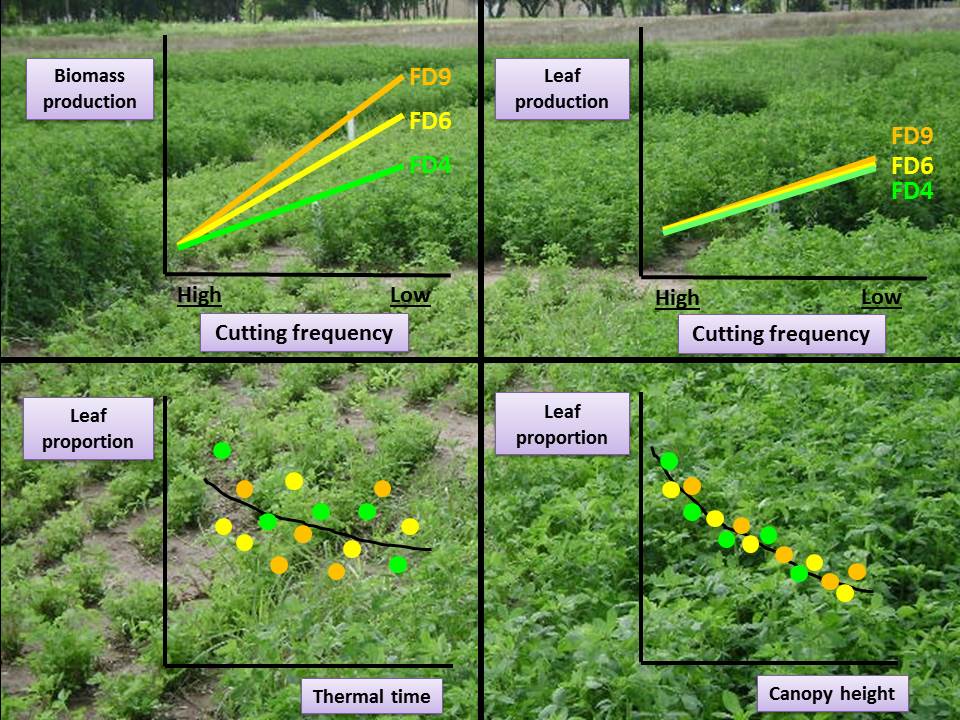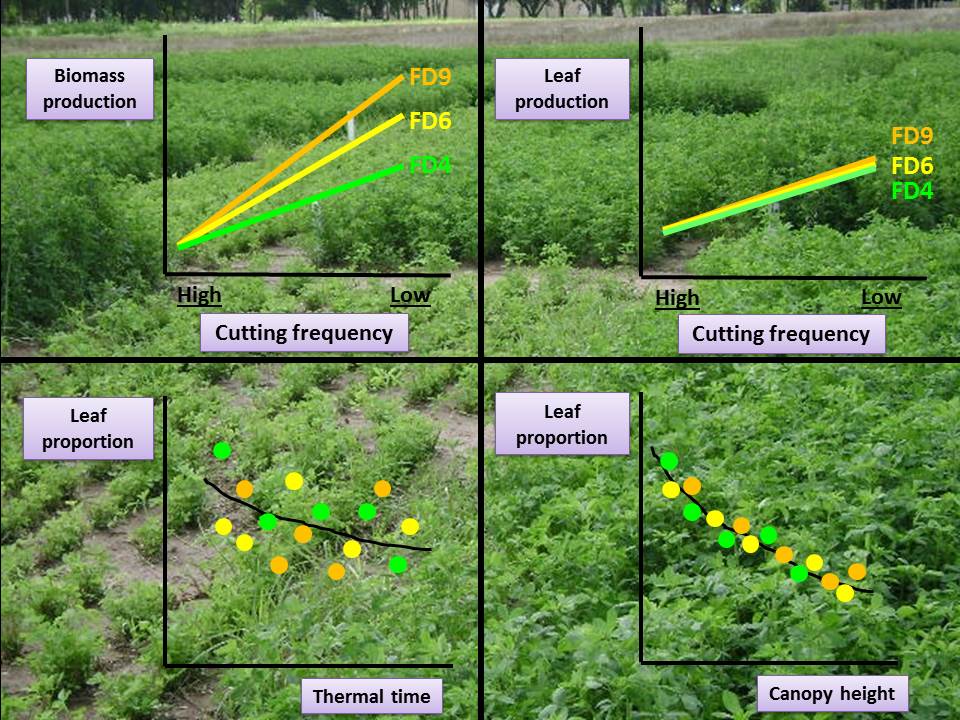Forage production and leaf proportion of lucerne in subtropical environments: cultivar, cutting frequency and canopy effects
Forage production and nutritive value of lucerne in subtropical environments
DOI:
https://doi.org/10.48162/rev.39.008Keywords:
lucerne, fall dormancy, cutting frequency, forage production, leaf to stem ratioAbstract

In subtropical and humid environments the ‘winter-active’ cultivars of lucerne usually produce more forage with lower leaf proportion (i.e. leaf to stem ratio) than the ‘winter-dormant’ ones. Present research analyze (i) if differences in forage production changes with cutting frequency, and (ii) if differences in leaf proportion are intrinsic (i.e. ‘cultivar differences’) or are due to variations in plant morphology (i.e. ‘aerial biomass and canopy height’). In two subtropical locations a factorial experiment including three alfalfa cultivars (FD4= ‘winter-dormant’, FD6=‘semi-dormant’, FD9=‘winter-active’) and three cutting frequencies (‘high’, ‘intermediate’ and ‘low’) was established. As the cutting frequency decrease (i.e. from ‘high’ to ‘low’) the more winter-active cultivars were more productive than the more winter-dormant ones (FD9>FD6>FD4) due mainly to a higher stem production. However, differences between cultivars disappear (FD9=FD6=FD4) as the cutting frequency increases (i.e. from ‘low’ to ‘high’ cutting frequency). Compared at similar canopy height, differences between cultivars in leaf proportion were practically irrelevant. We confirm that (i) in subtropical and humid environments, the differences in forage production between cultivars contrasting in their winter activity depend of the cutting frequency, and that (ii) the leaf proportion depends mainly of plant morphology, especially canopy height’, being irrelevant the cultivar and the environment.
Highlights
- This paper shows that (i) differences in forage production between cultivars of lucerne depend on the cutting frequency, and that (ii) leaf proportion is governed by plant morphology, especially canopy height.
- Forage production was similar between cultivars at high cutting frequency but at low cutting frequency winter-active and semi-dormant cultivars (FD6 and FD9) produce more forage than winter dormant (FD4) ones.
- Lucerne cultivars showing the same leaf proportion when they were compared at similar canopy height suggesting that leaf proportion is not an intrinsic trait
- Changes in leaf proportion were better explained by changes in canopy height than by changes in thermal time.
Downloads

Downloads
Published
How to Cite
Issue
Section
License
Copyright (c) 2021 Revista de la Facultad de Ciencias Agrarias UNCuyo

This work is licensed under a Creative Commons Attribution-NonCommercial-ShareAlike 3.0 Unported License.
Aquellos autores/as que tengan publicaciones con esta revista, aceptan las Políticas Editoriales.











.jpg)




